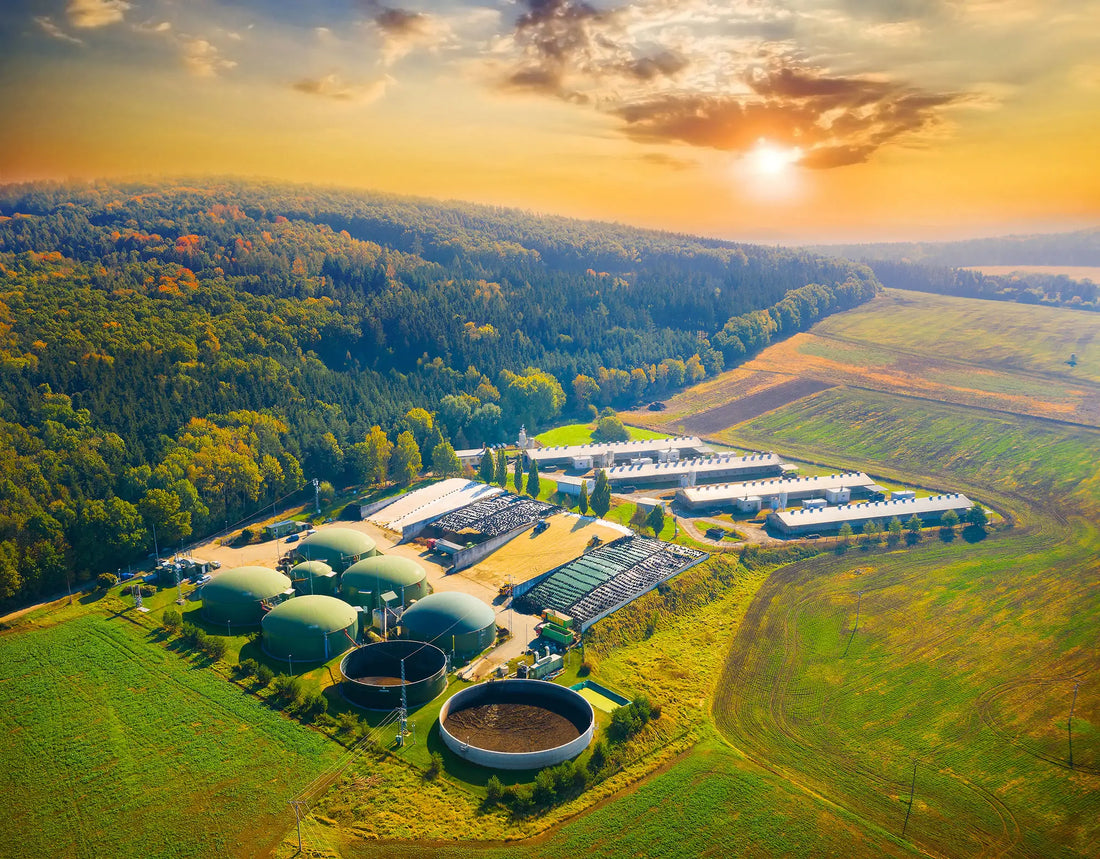With global food waste surpassing 1.3 billion tons annually, the push for sustainable food waste management has become an urgent priority. Anaerobic digestion (AD) has emerged as a powerful, eco-friendly solution, transforming discarded food into renewable energy and nutrient-rich digestate. But digesting food waste is not without its challenges.
In this post, we examine the technical and operational hurdles of food waste digestion and explore how innovations like ELI Biosciences' Biogas Series provide microbial solutions that unlock its full potential.
Why Food Waste? The High-Potential Feedstock
Food waste is an attractive feedstock for AD for several reasons:
- High biodegradability: Rich in carbohydrates, fats, and proteins, food waste breaks down faster than many other feedstocks.
- High biogas yield: Food waste can generate more methane per ton than manure or sewage sludge.
- Circular economy: AD of food waste supports zero-waste goals, greenhouse gas mitigation, and energy recovery.
Despite this promise, food waste is also highly variable and chemically complex—factors that can destabilize digestion processes without proper biological and operational control
Top Challenges in Food Waste Anaerobic Digestion
1. Feedstock Variability
Food waste composition changes daily. One load might be rich in fats and oils; the next full of starch and sugars. This variability affects microbial balance and digestion efficiency.
Impact: Rapid shifts in volatile solids, pH, or ammonia levels can inhibit microbial populations, particularly sensitive methanogens.
Solution: ELI’s Biogas Series uses resilient microbial strains that adapt to changing organic profiles and help maintain biological continuity in variable environments.
2. High Fat, Oil, and Grease (FOG) Content
FOG-rich food waste generates high methane yield—but only if digested properly. Without targeted microbes, these compounds form scum layers, lead to foaming, and cause digester imbalance.
Impact: Foam inhibits gas capture, increases risk of overflow, and lowers throughput.
Solution: Our hydrolysis and biomass stimulation products improve fat breakdown and reduce FOG buildup, allowing smoother microbial flow through all stages
3. Ammonia and Sulfide Inhibition
Protein-rich food waste releases ammonia during degradation. In excess, it becomes toxic to methanogens. Similarly, sulfur-rich materials like sauces or meat byproducts can lead to high H₂S production.
Impact: These compounds reduce methane yield, corrode equipment, and demand expensive gas scrubbing.
Solution: ELI Biosciences’ Methane Maximizer helps reduce sulfide generation and supports methanogen resilience under ammonia stress, lowering H₂S levels by up to 55%.
4. Short Retention Time and Overloading
Due to its high organic load, food waste can rapidly acidify the digester if added too quickly or in large volumes without sufficient buffering or acclimatized biology.
Impact: Acidification disrupts pH balance, halting methanogenesis and triggering reactor failure.
Solution: The Biogas Series introduces functional strains at every digestion phase, stabilizing pH and balancing microbial communities for consistent gas production.
Microbial Solutions: Tailoring Digestion to Food Waste
Unlike conventional systems, ELI Biosciences focuses on stage-specific microbial enhancement, optimizing digestion from start to finish:
1. Hydrolysis Boosters (BGEH)
- Breaks down high cellulose/hemicellulose, fats, and proteins
- Reduces solid retention and scum layers
2. Biomass Stimulation (BGE1)
- Supports bacterial oxidation pathways
- Promotes balanced volatile fatty acid production
3. Nutrient supplement (BGE2)
- Reduces H₂S emissions and enhances reactor uptime
Methane Production Maximizer (BGEM)
- Increases methane yield and gas purity
With these targeted blends, food waste digestion becomes more predictable, scalable, and profitable.
Real-World Impact: Case Example from Northern Europe
A mid-sized digester in Northern Europe struggled with H₂S levels above 250 ppm with Fe(OH)2 treatment while processing mixed food waste. After introducing ELI’s Biogas Series (BGE1 and BGE2) over 60 days:
- H₂S dropped 75%, reducing desulfurization costs significantly
- Methane concentration increased 7%, leading to higher gas revenue
- Sludge volume reduced, improving reactor capacity by ~10%
These outcomes demonstrate how microbial enhancement isn't just a technical upgrade, it’s a competitive advantage.
Emerging Trends and Opportunities
1. Decentralized Digesters at Supermarkets and Universities
On-site digesters can reduce hauling costs and turn food waste into power or heating. These smaller systems benefit greatly from biological support to handle rapid feedstock shifts.
2. Co-Digestion with Manure or FOG
Combining food waste with other high-energy or balanced C:N feedstocks creates synergistic microbial environments—but also increases process complexity.
ELI’s multi-strain approach ensures stability and methane optimization even in co-digestion systems.
3. Carbon Credits and Renewable Energy Incentives
Food waste digestion is increasingly eligible for government-backed carbon offsets and clean energy grants. Maximizing gas output and stability strengthens the financial case for investment.
Solving Food Waste with Science
Anaerobic digestion of food waste is not a one-size-fits-all solution—it requires microbiological precision, system adaptability, and process support. ELI Biosciences’ Biogas Series delivers all three.
By addressing the core challenges of food waste digestion with tailored microbial technology, we’re helping operators convert instability into opportunity, and waste into clean energy.
Contact us: info@elibiosciences.com | 1-800-645-2976

